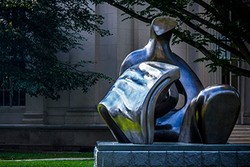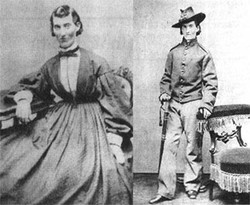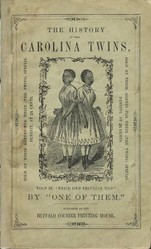“Primitivism” is “a belief of what is simple and unsophisticated, expressed as a philosophy of life or through art or literature” (Oxford, 2019). This definition also implies a lack of cultural attitude. There is variation in how much naïveté or underdevelopment is present. Western culture brought an approach in which there was social or psychological repression. However, this does not mean that one cannot leave his or her own culture and identify with people whom many consider “uncivilized.” One may observe that there are quotation marks around “primitivism,” and this somewhat informs the reader that there are cultures which are outside of European environments.

McKay and Primitivism
This is an analysis of primitivism and the Harlem Renaissance.
Harlem Renaissance
Harlem represented “glorification of the primitive Negro.” This is quite a change from prior criticism of blacks. In any event, this observation acknowledges that New York City has left some positive reinforcement for blacks and others who want to enjoy that part of the country. Though Pontuale and others may suggest that McKay’s book is not like other geographic areas, some will say that the Harlem Renaissance has dramatically changed America’s race relations
(1, 2).
Pontuale writes that modernism gives the impression that minorities whose ideas are not in line with European approaches deserve criticism for this. However, McKay responds with confidence that Home to Harlem generates much wealth and fame. It may be like Carl Van Vechten’s Nigger Heaven which also earned a great deal of money despite the mixed responses about it. McKay and Pontuale have opposite opinions about these matters, and the same is likely true over Carl Van Vechten’s method. There is much controversy as well with regards to white patriarchal ideology and leftist radicalism. Radicalism is an allusion to “beliefs of people who advocate…complete political or social reform” (Oxford, 2019). White patriarchal ideology is common in literature about colonialism (Media Education Foundation, Bell Hooks). This term expresses the presence of white supremacist approach. It also entails gender. Another item of interest is that McKay was not in the United States for several years when he wrote Home to Harlem. Pontuale does describe some good points about McKay’s work. One of them is on the “New Negro” movement. Essentially, he acknowledges that the Harlem Renaissance was a time in history which generates written material from whites and blacks (1, 2).
W. E. B. DuBois
It would, of course, be reasonable to make comments on W.E.B. DuBois about the Harlem Renaissance. His initial reaction to McKay’s book was that it made black people appear somewhat sensual or animalistic. In fact, he believed that this reinforced stereotypes in blacks. This view received positive and negative opinions. Those who danced sensually and found girlfriends in New York were, in some instances, happy with their lifestyles. Others agreed with Dr. DuBois, and they objected to something which was obviously new with the turn of the 1920s. McKay’s reaction was like other objections from this time. Specifically, this time in history was a dramatic change for New York City. Pontuale also examined the postwar American society “from Puritan sexual ethics.” Some new urban blacks of New York were “exoticized as primitive.” Hence, some researchers chose to describe the African-American method as “primitivist discourse.” Such an approach means that it is possible to describe low status (Oxford, 2019), and this leads women, racial/ethnic minorities, and others to receive unequal treatment. Nevertheless, the matter between DuBois and McKay continued after the First World War. This is where blacks acquire more freedom than they have had in the past. They wanted equality rather than treatment that they were inferior to whites. McKay, however, wrote his book so that equality would become more of a reality than before. Hence, McKay criticized DuBois and the National Association for the Advancement of Colored People (NAACP). McKay had a role in “the new black ethos.” The term “liberal capitalists” became in vogue as these two parties continued the dispute. In other words, McKay stated that this was “A society in which liberal principles are put in effect is usually called a capitalist society….” Another term for this is “liberal capitalism.” (American Institute for Economic Research, 2019). This was obviously a serious polemical or aggressive attack upon Dr. DuBois. Some of the writing in Home to Harlem suggests that the First World War was a “white folks affair” (1, 2).
McKay's Success
Pontuale acknowledges that Harlem “is the locale of primitivism” (RSA Journal, page 70). However, he says that Harlem is colorful and with “people, vivacity, life, and exuberance.” At the same time, he says it is a savage environment…animal, the sensual and the sexual thrive” (RSA Journal, page 71). The author states that “Jake is the novel’s main representative of primitivism: he follows his instinct. He is the impulsive and earthy…and the sexual thrive.”
This is an examination of life in Harlem during the 1920s. It is, of course, the Harlem Renaissance which Americans remember well today. There will be one scholarly journal article as well as Claude McKay’s Home to Harlem. The book sold 11,000 copies within two weeks of its release. Moreover, it gained recognition as America’s first best-seller from a black writer. There is controversy over the book. For example, Dr. W.E.B. DuBois criticized “its depiction of lower-class Harlemites” (1). In other words, McKay reinforces stereotypical views of blacks in New York. Franscesco Pontuale, in his scholarly paper, uses the term “primitivism” to illustrate this matter.
The dispute between W.E.B. DuBois and the writer has to do with the term “primitivism” which considers style of art. Primitivism is a belief in the superiority of a simple way of life close to nature. It also has to do with a style of art which is simple or not very sophisticated, and there is a philosophy or life through art or literature (Oxford, 2019; Merriam-Webster Online; 2019). This likely explains why DuBois refers to reinforcement of stereotypes and blacks (Pontuale, 1998).
Though McKay’s book brought disputes, he wanted it to be honest. This may be because the writer was seeking sensationalism which is common among journalists. Specifically, however, he wanted the reader to comprehend the true lifestyle of blacks. This includes sexuality, alcohol use, substance use disorder, and dialectical variations.
The vast differences between Harlem 100 years ago and what it is today do not discount its similarities. For example, sexually transmitted infections have been present in the United States for decades. Human immunodeficiency virus infection, to our knowledge, was not anywhere on the globe until the late 1970s. Moreover, it was not until late 1970s that the virus caused this mysterious illness.
Pontuale asserts that McKay writes about “race awareness and leftist radicalism.” Radicalism is an expression, belief, or action when people recommend serious or complete political or social reform (Oxford, 2019). The matter of primitivism remains in the literature as a connection with Irish, African-Americans, women, and East European Jews. Researchers also assess the working class and subaltern communities. Subaltern generally indicates that one is of lower status than others or a victim of oppression or marginalization (Oxford, 2019).
As it is possible to say that McKay’s book sold thousands of copies two weeks after its release, it may be that this was a pinnacle of his career. It was his biggest hit as a writer. This apotheosis is a culmination or climax of something (Oxford, 2019). Others will suggest that academia is of greater importance than the number of sales and revenue one makes. Nevertheless, large sales are legal in the United States unless there is something unethical about the transaction.
Home to Harlem
The author of Home to Harlem examines matters such as civilization. This term is the opposite of chaos or barbarism. It is an advanced form of human society in which people have “a reasonable degree of organization.” As a result, people who reside in areas of this nature are comfortable and able to contemplate art and education (Vocabulary.com, 2019). The belief that blacks lack such organization is an argument that many have utilized to promote segregation.
In McKay’s book there is a description on pages 295 to 296 in which customers are relaxing at Sheba Palace where New Yorkers can enjoy Ethiopian food. The customers get a surprise when Jake enters and observes gold and green colors inside. Music immediately stops. The text says there are “Little white-filled glasses, general guzzling of gin and whiskey. Little saucy brown lips, rouged maroon, sucking up iced crème de menthe through straws…sipping the golden Virginia Dare…”
“On the green benches lounged, sprawled, and with the juicy love of spring and the liquid of Bacchus…fascinating white eyes curious in their dark frames…loving in every way…” (McKay, 1928).
“…dancers running, sliding, shuffling, trotting to the floor.” (McKay, 1928).
“Black fellows were playing it with éclat.” Éclat means there is praise, applause, publicity, or brilliance such as a dazzling effect. (McKay, 1928).
This is a scenario in which Jake, who is black, enters a cabaret perhaps, and there are performers who are black. The musicians are black, and some of the women who sing or dance are of color. There is alcohol consumption, and unless this situation becomes out of control, that will not be an issue. The restaurant is named after Queen of Sheba, and there are similar stores around Africa which mimic it. Girls invite the men to dance with them, and they quickly reply “grinning gayly.”
This is not a situation in which primitivism is present. There is poetry which describes some of the performers who have an interest in someone’s father at the restaurant. The information available does not suggest animalistic or promiscuous behavior.
Conclusion
This has been an interesting assessment of the Harlem Renaissance. It was a time in history which America—and other geographical regions—will long remember. These were years when people courageously came forward with their views on racism and sexuality. Pontuale is somewhat negative about these dramatic changes in this country. At the same time, he does a good review in his scholarly article. In fact, he provides names of well-known writers, and throughout the article Pontuale discusses a variety of interesting terms and definitions which are available in dictionaries. His approach gives attention to politics, sociology, mental health, and various controversies which are likely to appear in a paper of this type (1).
Though Dr. DuBois’ comments provide very little support for McKay, one cannot ignore DuBois’ knowledge and experience of these matters. His claim that primitivism is present in these scenarios, however, is somewhat exaggerated. The reader must remember that one of McKay’s objectives is to present an honest description of his book regardless of the “disruption” that it may appear to generate. It is also true that DuBois at one time carried a staff of mostly Caucasians when he worked at the NAACP. There is no doubt that Dr. DuBois has been under question over the years, and articles even suggest that he may have left that organization with a resignation because of ideological differences.
Progress has always been a characteristic of America—and other countries. When controversy comes, it commonly leads to dispute over the most noticeable topics.
References
- Pontuale, F. (1998). The contagious fever of the jungle: Primitivism in Claude McKay’s Home to Harlem. RSA Journal, 8-9.
- McKay, C. (1928). Home to Harlem. New York: Harper and Brothers.
- Copyright 2019. Michael Koger, Sr. All rights reserved.
You might also like
The Women Who Fought in the American Civil WarWhen we imagine the heat and blood of Gettysburg, it's the men that we see st...
The Carolina Conjoined Slave Twins Born in 1851In 1851 children who were born ill or with special needs seldom survived. Con...



 The Reality of Aspirinon 05/24/2021
The Reality of Aspirinon 05/24/2021
 An Old Microbeon 03/31/2021
An Old Microbeon 03/31/2021
 Coronavirus and Mental Illnesson 02/14/2021
Coronavirus and Mental Illnesson 02/14/2021
 Acute Ischemic Strokeon 12/25/2020
Acute Ischemic Strokeon 12/25/2020


Comments